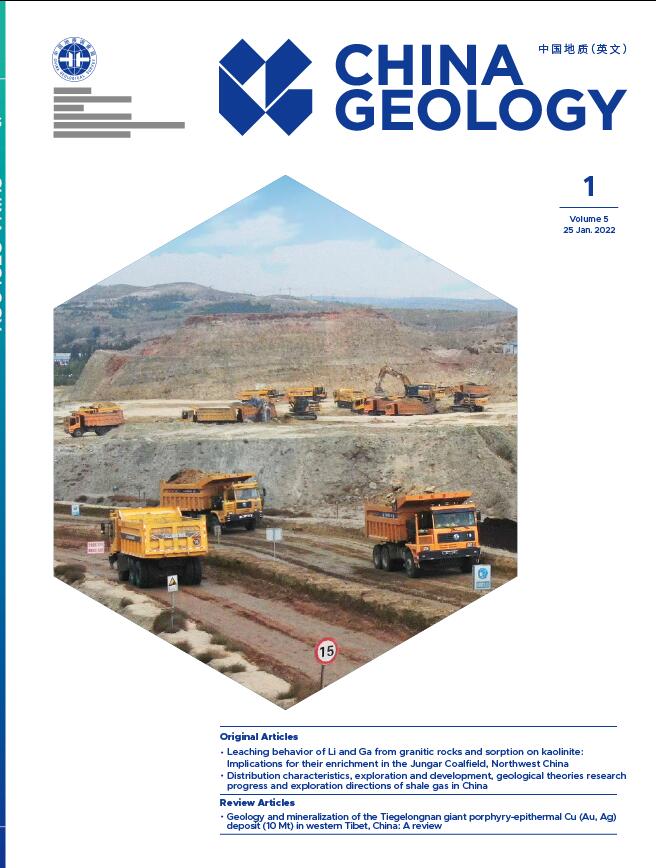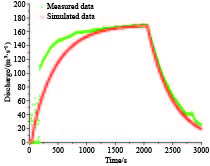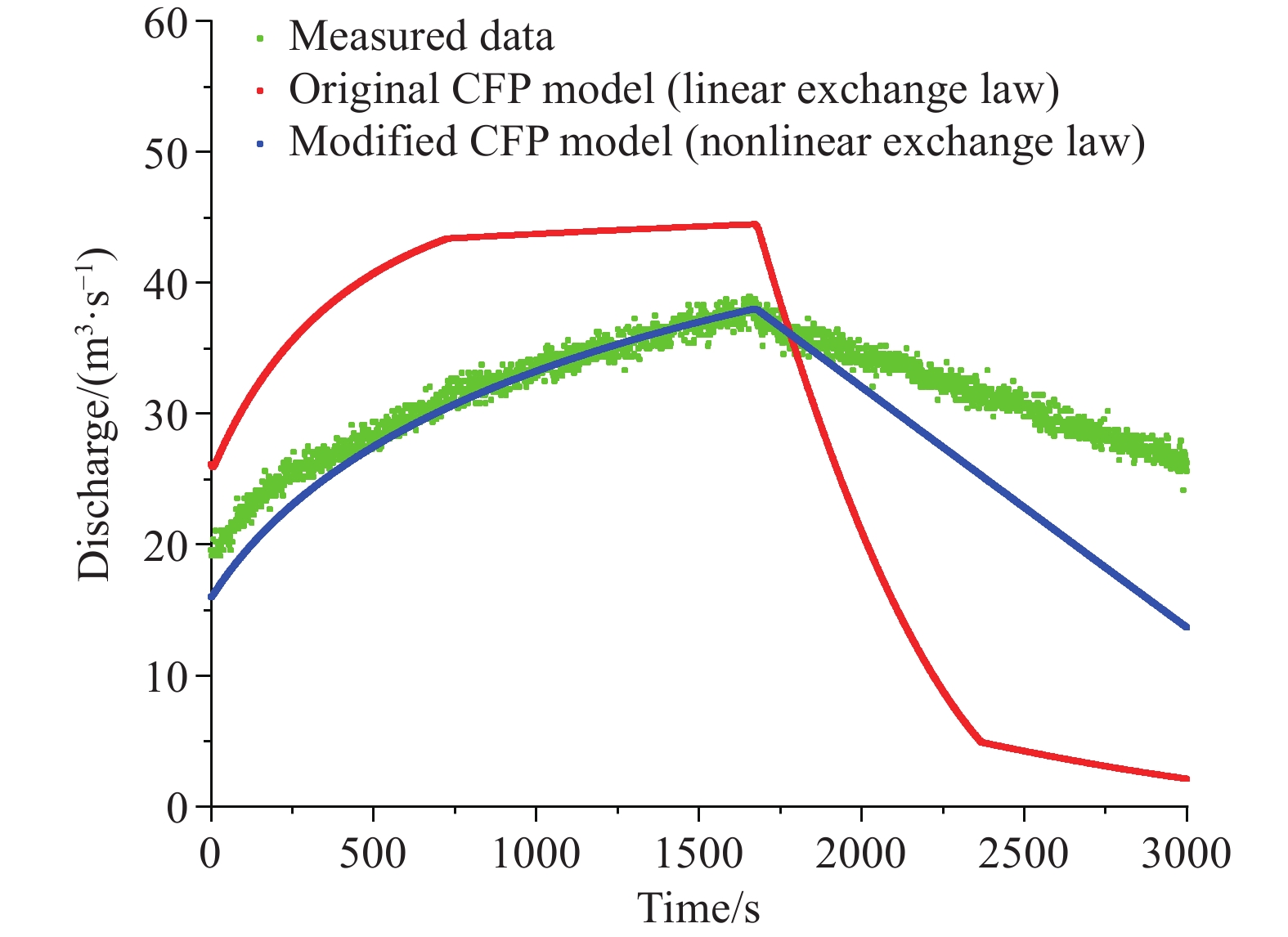| Citation: | Liang-jie Zhao, Yang Yang, Jian-wen Cao, Zhe Wang, Song Luan, Ri-yuan Xia, 2022. Applying a modified conduit flow process to understand conduit-matrix exchange of a karst aquifer, China Geology, 5, 26-33. doi: 10.31035/cg2021046 |
Applying a modified conduit flow process to understand conduit-matrix exchange of a karst aquifer
-
Abstract
Due to the high heterogeneity and complexity of water flow movement for multiple karst water-bearing mediums, the evaluation, effective development, and utilization of karst water resources are significantly limited. Matrix flow is usually laminar, whereas conduit flow is usually turbulent. The driving mechanisms of water exchange that occur between the karst conduit and its adjacent matrix are not well understood. This paper investigates the hydrodynamic characteristics and the mechanism of flow exchange in dual water-bearing mediums (conduit and matrix) of karst aquifers through laboratory experimentation and numerical simulation. A karst aquifer consisting of a matrix network and a conduit was proposed, and the relationship between the water exchange flux and hydraulic head differences generated from the laboratory experiments was analyzed. Two modes of experimental tests were performed with different fixed water level boundaries in the laboratory karst aquifer. The results indicate that the water exchange capacity was proportional to the square root of hydraulic head differences. The linear exchange term in the conduit flow process (CFP) source program was modified according to experimental results. The modified CFP and the original CFP model experimental data results were compared, and it was found that the modified CFP model had better fitting effects. These results showed that the water exchange mechanism between conduit and matrix is very important for solid-liquid interface reaction, water resource evaluation, and understanding of karst hydrodynamic behavior.
-

-
References
Atkinson TC. 1977. Diffuse flow and conduit flow in limestone terrain in the Mendip Hills, Somerset (Great Britain). Journal of Hydrology, 35(1), 93–110. doi: 10.1016/0022-1694(77)90079-8. Bailly-Comte V, Martin JB, Screaton EJ. 2011. Time variant cross correlation to assess residence time of water and implication for hydraulics of a sink-rise karst system. Water Resources Research, 47(5), 143–158. doi: 10.1029/2010WR009613. Bauer S, Liedl R, Sauter M. 2003. Modeling of karst aquifer genesis: Influence of exchange flow. Water Resources Research, 39(10), 371–375. doi: 10.1029/2003WR002218. Bauer S, Liedl R, Sauter M. 2000. Modelling of karst development considering matrix-conduit exchange flow. Iahs Publication, 265, 10–15. Binet S, Joigneaux E, Pauwels H, Albéric P, Bruand A. 2017. Water exchange, mixing and transient storage between a saturated karstic conduit and the surrounding aquifer: Groundwater flow modeling and inputs from stable water isotopes. Journal of hydrology, 544, 278–289. doi: 10.1016/j.jhydrol.2016.11.042. Brkić Ž, Kuhta M, Hunjak T. 2018. Groundwater flow mechanism in the well-developed karst aquifer system in the western Croatia: Insights from spring discharge and water isotopes. Catena, 161, 14–26. doi: 10.1016/j.catena.2017.10.011. Butscher C, Huggenberger P. 2008. Intrinsic vulnerability assessment in karst areas: A numerical modeling approach. Water Resources Research, 44(3), 1–15. doi: 10.1029/2007WR006277. Faulkner J, Hu BX, Kish S, Hua F. 2009. Laboratory analog and numerical study of groundwater flow and solute transport in a karst aquifer with conduit and matrix domains. Journal of contaminant hydrology, 110(1‒2), 34–44. doi: 10.1016/j.jconhyd.2009.08.004. Hartmann A, Wagener T, Rimmer A, Lange J, Brielmann H, Weiler M. 2013. Testing the realism of model structures to identify karst system processes using water quality and quantity signatures. Water Resources Research, 49(6), 3345–3358. doi: 10.1002/wrcr.20229. Hill ME, Stewart MT, Martin A. 2010. Evaluation of the MODFLOW-2005 conduit flow process. Groundwater, 48(4), 549–559. doi: 10.1111/j.1745-6584.2009.00673.x. Hubinger B, Birk S, Hergarten S. 2016. A new equation solver for modeling turbulent flow in coupled matrix-conduit flow models. Groundwater, 54(4), 596–602. doi: 10.1111/gwat.12400. Hu XL, Wang XM, Gunzburger M, Hua F, Cao YZ. 2012. Experimental and computational validation and verification of the Stokes–Darcy and continuum pipe flow models for karst aquifers with dual porosity structure. Hydrological Processes, 26(13), 2031–2040. doi: 10.1002/hyp.8308. Ghasemizadeh R, Hellweger F, Butscher C, Padilla I, Vesper D, Field M, Alshawabkeh A. 2012. Groundwater flow and transport modeling of karst aquifers, with particular reference to the North Coast Limestone aquifer system of Puerto Rico. Hydrogeology journal, 20(8), 1441–1461. doi: 10.1007/s10040-012-0897-4. Luo WQ, Jiang ZC, Yang QY, Li YQ, Liang JH. 2018. The features of soil erosion and soil leakage in karst peak-cluster areas of Southwest China. Journal of Groundwater Science and Engineering, 6(1), 18–30. doi: 10.19637/j.cnki.2305-7068.2018.01.003. Martin JB, Dean RW. 2001. Exchange of water between conduits and matrix in the Floridan aquifer. Chemical Geology, 179(1), 145–165. doi: 10.1016/S0009-2541(01)00320-5. Martin JB, Screaton EJ. 2001. Exchange of matrix and conduit water with examples from the Floridan Aquifer. In: US Geological Survey Karst Interest Group Proceedings. Water-Resources Investigations Report, 1(4011), 38‒44. Mitrofan H, Marin C, Povară L. 2015. Possible conduit-matrix water exchange signatures outlined at a karst spring. Groundwater, 53(S1), 113–122. doi: 10.1111/gwat.12292. Reimann T, Geyer T, Shoemaker WB, Liedl R, Sauter M. 2011. Effects of dynamically variable saturation and matrix-conduit coupling of flow in karst aquifers. Water Resources Research, 47(11), 1–19. doi: 10.1029/2011WR010446. Reimann T, Giese M, Geyer T, Liedl R, Maréchal JC, Shoemaker WB. 2014. Representation of water abstraction from a karst conduit with numerical discrete-continuum models. Hydrology and Earth System Sciences, 18(1), 227–241. doi: 10.5194/hess-18-227-2014. Shoemaker WB, Kuniansky EL, Birk S, Bauer S, Swain ED. 2008. Documentation of a conduit flow process (CFP) for MODFLOW-2005. Geological Survey Techniques and Methods 6-A24. doi: 10.3133/tm6A24. Tang R, Shu LC, Lu CP, Zhang CY, Fan JH Appiah-Adjei EK, Emmanuel K. 2015. Laboratory analog analysis of spring recession curve in a karst aquifer with fracture and conduit domains. Journal of Hydrologic Engineering, 21(2), 1–13. doi: 10.1061/(ASCE)HE.1943-5584.0001271. Wu Y, Hunkeler D. 2017. Sedimentary roles on hyporheic exchange in karst conduits at low Reynolds numbers by laboratory experiments. Hydrogeology Journal, 25(3), 787–798. doi: 10.1007/s10040-016-1531-7. Xia RY. 2016. Groundwater resources in karst area in Southern China and sustainable utilization pattern. Journal of Groundwater Science and Engineering, 4(4), 301–309. doi: 10.19637/j.cnki.2305-7068.2016.04.005. Zhao LJ, Yang Y, Xia RY, Shao JL, Cao JW, Fan LJ, Chen HF. 2018. Evaluation of a hydrodynamic threshold in the Zhaidi karst aquifer (Guangxi Province, China). Environmental earth sciences, 77(12), 424. doi: 10.1007/s12665-018-7599-8. -
Access History

-
Figure 1.
Conceptual model of a karst aquifer.
-
Figure 2.
Schematic of the laboratory analog.
-
Figure 3.
Concept model of the first group experiment.
-
Figure 4.
Concept model of the second group experiment.
-
Figure 5.
Discharge hydrograph with different experimental conditions.
-
Figure 6.
Mathematical equations were obtained using regression analysis.
-
Figure 7.
Structure of the conceptual model. a‒horizontal structure of the conceptual model; b‒vertical structure of the conceptual model; c‒CFP model node and pipe number.
-
Figure 8.
Simulated result of the first test without conduit using MODFLOW.
-
Figure 9.
Simulated result of the second test for the conduit using the modified CFP.
-
Figure 10.
The contrast of flow exchange between linear equation and nonlinear equation.





 DownLoad:
DownLoad:








